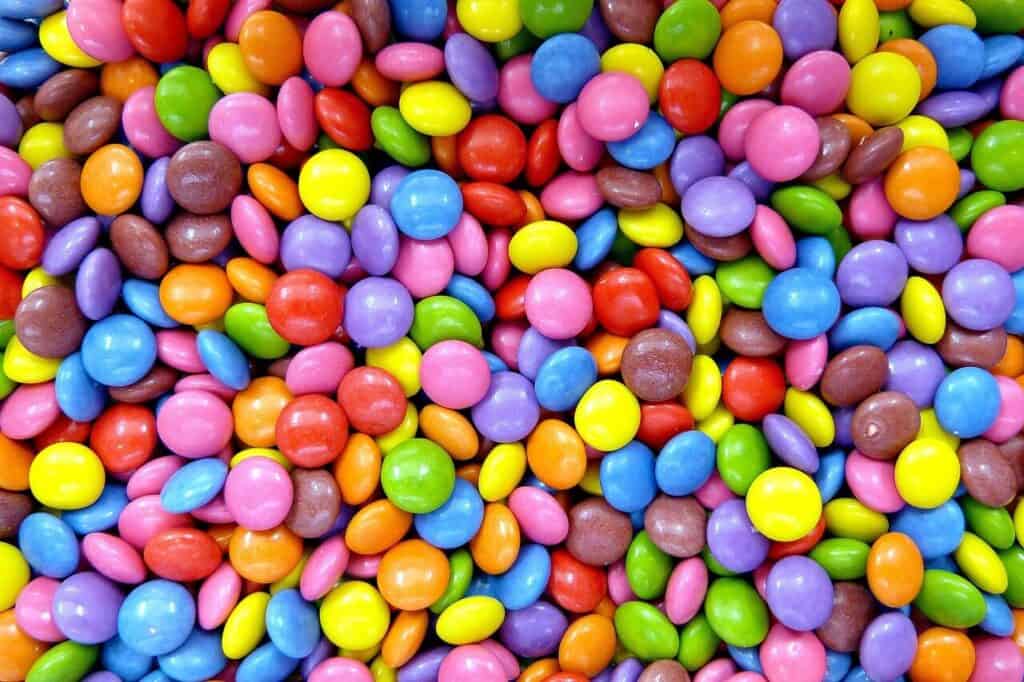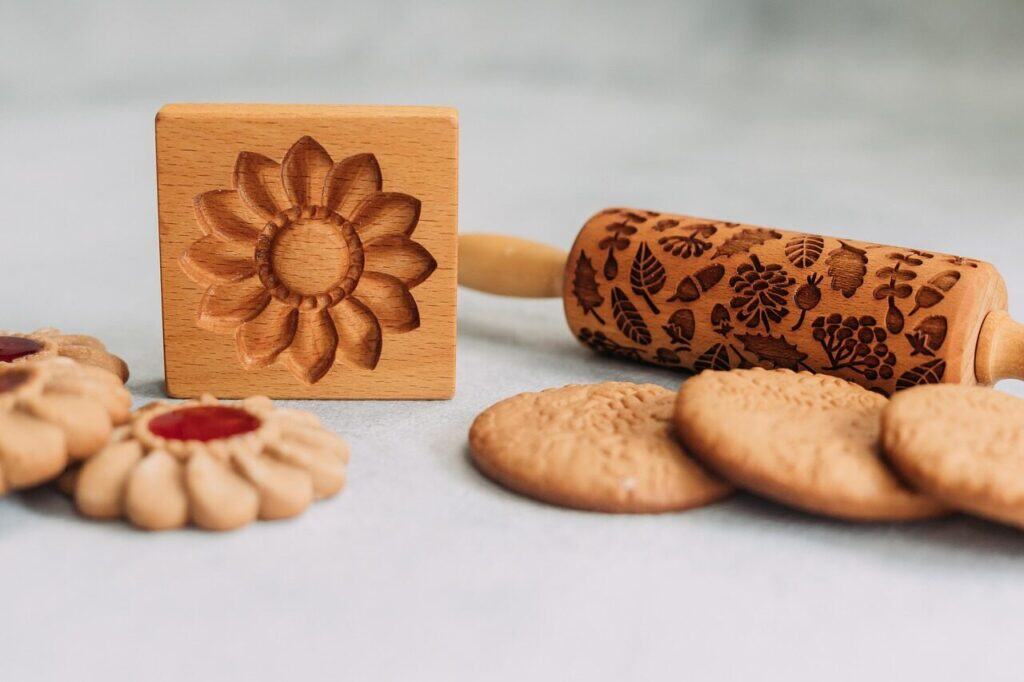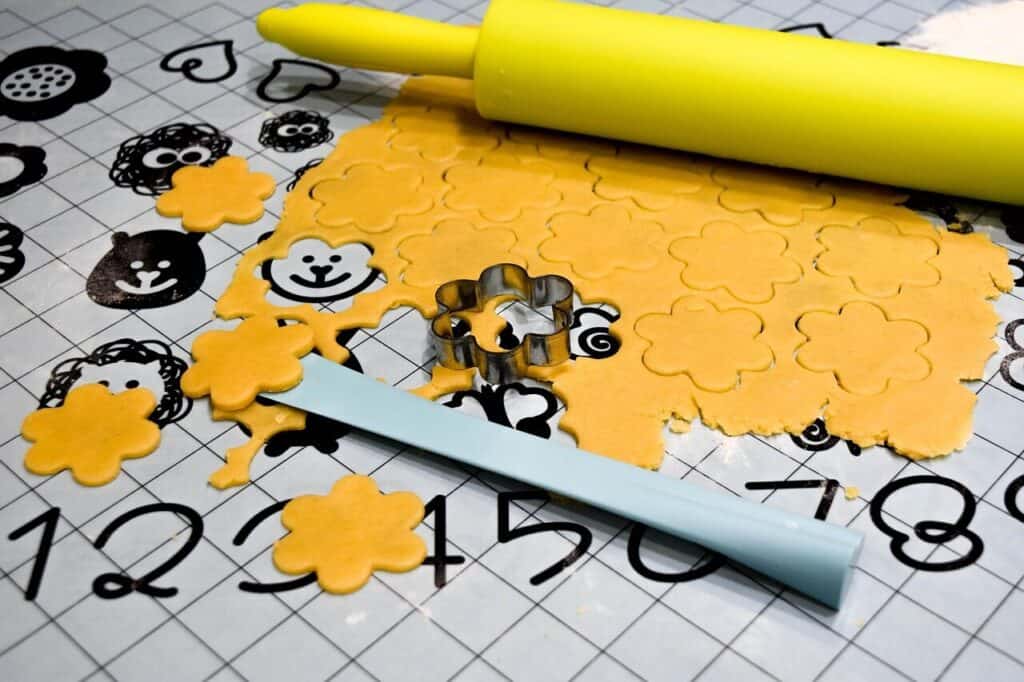La science du succès sucré : Une plongée technique dans le moulage des bonbons
La science cachée
Un bonbon parfaitement moulé a l'air simple. Ce n'est qu'un petit symbole de douceur. Mais sa forme parfaite est le résultat d'un mélange complexe de physique et de chimie.
Fabriquer la pièce parfaite n'est pas une question d'art. C'est une question de science appliquée. Cette discipline exige de maîtriser les forces invisibles qui régissent la matière.
Nous explorerons les piliers techniques qui définissent le succès du moulage des bonbons. Il s'agit de la thermodynamique, de la cristallisation, de la dynamique des fluides et de la science des matériaux.
Cet article va au-delà des simples recettes. Nous voulons vous donner les connaissances techniques nécessaires pour diagnostiquer les problèmes, améliorer la consistance et obtenir des résultats professionnels dans chaque projet de moulage de bonbons.
Principes fondamentaux
Pour maîtriser le moulage des bonbons, vous devez comprendre les concepts scientifiques de base qui sous-tendent l'ensemble du processus. C'est la base théorique de tous les travaux pratiques.
La compréhension de ces principes explique l'importance de certaines étapes. Vous apprendrez le "pourquoi" derrière le "comment". Cela vous permettra d'adapter les recettes et de résoudre les problèmes en toute confiance.
Chaleur et thermodynamique
La chaleur est le moteur de la transformation de la confiserie. La façon dont elle passe du pot au bonbon, puis du bonbon au moule, suit les lois de la conduction et de la convection.
Vous devez contrôler la température avec précision pour obtenir la bonne structure et la bonne finition. Chaque changement de phase implique un transfert d'énergie. C'est ce qu'on appelle la chaleur latente de cristallisation, et vous devez la gérer.
Les changements brusques de température provoquent un choc thermique. C'est pourquoi les bonbons se fissurent, ont un aspect terne ou une texture médiocre. Le matériau se contracte de manière inégale.
Dynamique des fluides
La viscosité est l'épaisseur du bonbon fondu. Elle est essentielle dans le processus de moulage. Elle détermine le comportement du liquide lors du remplissage du moule.
Plusieurs facteurs influencent la viscosité. La température a une relation inverse : plus elle augmente, plus la viscosité diminue. Le mélange de sucre, de graisse et d'émulsifiants joue également un rôle important.
L'agitation peut également modifier l'épaisseur. Certains mélanges s'amincissent lorsqu'on les remue. D'autres peuvent s'épaissir.
Les effets pratiques sont énormes. La viscosité affecte votre capacité à remplir des moules détaillés. Elle détermine si vous emprisonnerez des bulles d'air. Elle détermine l'épaisseur de la coque de chocolat.
Plongée dans la cristallisation
La cristallisation est le phénomène chimique le plus important. processus de fabrication des bonbons. C'est le cœur de tout. Il contrôle la texture finale, le claquement et la brillance de vos créations.
Si vous maîtrisez ce processus, vous contrôlez l'aspect brillant ou terne du chocolat. C'est vous qui décidez si le sucre candi est clair ou granuleux. Cette science moléculaire sépare les amateurs des experts.
Six formes de beurre de cacao
Les propriétés uniques du chocolat proviennent du beurre de cacao. Il est polymorphe. Cela signifie qu'il peut se solidifier en six structures cristallines différentes, de la forme I à la forme VI.
Les formes I à IV sont instables. Elles sont molles et fondent facilement. Elles n'ont pas l'éclat et la brillance que l'on attend d'un chocolat de qualité.
Votre objectif en tant que chocolatier est de ne créer que des cristaux de forme V. Ces cristaux sont stables, denses et serrés.
La différence est indéniable. Le chocolat non tempéré est plein de cristaux instables. Il a une texture cireuse et friable et présente souvent des stries d'efflorescence. Une tablette bien tempérée contient principalement des cristaux de forme V. Elle a un craquement net et net et une texture cireuse et friable, et présente souvent des stries de fleur. Elle a un claquement net et tranchant et une brillance éclatante.
La science de la trempe
Le tempérage n'est pas une simple recette. C'est une processus contrôlé de chauffageL'ensemble de la procédure permet la formation de cristaux de forme V stables. L'ensemble de la procédure permet la formation de cristaux stables de forme V.
Ce processus se déroule en trois étapes. La première est la fonte. Cette étape permet d'éliminer toutes les structures cristallines existantes dans le chocolat.
Vient ensuite le refroidissement ou l'ensemencement. Il s'agit de refroidir le chocolat à une température spécifique. Cela favorise la formation des premiers cristaux de forme V. Vous pouvez le faire en ajoutant du chocolat déjà tempéré (semences) ou en refroidissant soigneusement sur une plaque de marbre. Vous pouvez le faire en ajoutant du chocolat déjà tempéré (semences) ou en refroidissant soigneusement sur une plaque de marbre.
Enfin, l'étape de réchauffement permet de ramener le chocolat à sa température idéale de travail. Cela permet de faire fondre les cristaux instables restants. Seule la structure stable de la forme V subsiste. Elle permet également d'obtenir une fluidité optimale pour le moulage.
Type de chocolat | Température de fusion | Température de refroidissement et d'ensemencement | Température de fonctionnement | Notes |
Foncé (55-70%) | 115-120°F / 46-49°C | 82-84°F / 28-29°C | 88-90°F / 31-32°C | Sujet à la surchauffe. Utiliser une chaleur douce. |
Du lait | 110-115°F / 43-46°C | 80-82°F / 27-28°C | 86-88°F / 30-31°C | Contient des extraits secs de lait ; plus sensible aux brûlures. |
Blanc | 105-110°F / 40-43°C | 78-80°F / 26-27°C | 84-86°F / 29-30°C | Teneur en sucre et en lait la plus élevée ; utiliser un feu très doux. |
Au-delà du chocolat
La cristallisation du sucre suit des règles différentes mais tout aussi importantes. Nous classons les bonbons de sucre en deux grands types : cristallins et non cristallins.
Les bonbons cristallins comme le fudge et le fondant doivent avoir une structure cristalline fine et lisse. Les bonbons non cristallins ou amorphes comme les bonbons durs Les bonbons, les sucettes et le caramel ne doivent pas contenir de cristaux. Cela donne une texture vitreuse.
Pour créer des bonbons non cristallins, il faut empêcher les molécules de sucre de s'organiser en cristaux. Pour ce faire, on ajoute des "agents interférents" au sirop de sucre.
Ces agents comprennent le sirop de maïs, l'acide (comme la crème de tartre) ou les graisses. Ils s'opposent aux molécules de saccharose. Cela perturbe la formation de structures cristallines larges et granuleuses.
Cela nécessite un contrôle précis de la température. Pour obtenir des bonbons durs et vitreux, il faut cuire le sirop de sucre jusqu'à ce qu'il atteigne le "stade de la fissure dure", c'est-à-dire entre 149 et 154 °C. À ce stade, la teneur en eau est si faible que la solution sucrée devient un solide amorphe très visqueux lorsqu'elle refroidit.
Guide à l'usage des spécialistes en science des matériaux
Le moule n'est pas un simple contenant passif. C'est un outil actif dans la fabrication des bonbons. Le matériau dont il est fait possède des propriétés physiques qui ont un impact direct sur le produit final.
Le choix du bon moule est une décision technique. Il influe sur la brillance, le transfert des détails et la facilité de démoulage. Ce choix est basé sur des propriétés scientifiques, et non sur des affirmations marketing.
Comparaison des outils
Le choix du matériau du moule a une incidence sur le fonctionnement du refroidissement et sur l'état de surface final du bonbon. Chaque matériau présente des avantages et des inconvénients distincts en fonction de ses caractéristiques physiques.
Nous pouvons comparer les matériaux les plus courants - polycarbonate, silicone et métal - en fonction de plusieurs propriétés techniques clés. Cela nous aide à comprendre leurs utilisations idéales.
Propriété | Polycarbonate (plastique rigide) | Silicone | Métal (aluminium/acier inoxydable) | Impact sur les bonbons |
Conductivité thermique | Faible | Très faible | Haut | Conductivité élevée permet un refroidissement plus rapide et plus homogène, favorisant une meilleure formation des cristaux et une contraction facilitant le démoulage. |
Finition de la surface | Très haute brillance | Mat à semi-brillant | Brillance modérée à élevée | La surface ultra lisse du polycarbonate est essentiel pour créer une finition professionnelle et brillante sur les chocolats. |
Rigidité/flexibilité | Rigide | Très flexible | Rigide | Rigidité est la clé d'une épaisseur de coquille constante. Flexibilité aide à démouler les bonbons complexes ou collants. |
Détail du transfert | Excellent | Très bon à excellent | Bon à très bon | Tout peut être bon, mais la rigidité du polycarbonate évite les déformations lors du remplissage. |
Cas d'utilisation idéal | Bonbons haut de gamme, barres chocolatées | Gommes, caramels, formes complexes | Production en grande quantité, bonbons durs | Choisissez en fonction de la finition souhaitée et du type de bonbon. |
Implications pratiques
Ces propriétés techniques ont une incidence directe sur votre travail. Le polycarbonate est le meilleur choix pour obtenir une brillance ultime sur le chocolat.
Sa rigidité permet à la coque de chocolat de ne pas fléchir. Sa faible énergie de surface permet au chocolat tempéré de se contracter parfaitement. Il se détache du moule pour créer une brillance miroir.
Pour les formes complexes ou les bonbons collants comme les gummies et les caramels, le silicone n'a pas son pareil. Son extrême flexibilité et ses propriétés antiadhésives vous permettent de démouler des objets délicats sans les casser.
Les moules en métal sont souvent préférés pour la production de grandes quantités ou le travail du sucre à haute température. Ils sont extrêmement durables. Leur conductivité thermique élevée permet un refroidissement rapide et homogène, ce qui est essentiel pour la production de sucre. lignes de production de bonbons durs.
Travailler avec ces matériaux est également différent. En frappant un moule en polycarbonate rigide sur votre surface de travail, vous libérez les bulles d'air. C'est solide, efficace et crucial. La même action est beaucoup moins pratique avec un moule en silicone souple, qui absorberait l'impact.
Dépannage des défaillances
Chaque échec dans le moulage des bonbons a une cause scientifique. Cela inclut les finitions ternes et les coquilles fissurées. En comprenant les principes, nous pouvons passer de la conjecture au diagnostic technique systématique.
Cette approche transforme les frustrations en opportunités d'apprentissage. Elle vous permet d'identifier la cause profonde des problèmes et de mettre en œuvre des solutions précises. Cela permet d'économiser du temps, des ingrédients et des efforts.
Défaut / Symptôme | Indice visuel | Cause(s) technique(s) | Solution(s) technique(s) |
Gros bourgeons | Traces grisâtres/blanches ou voile à la surface. | Mauvaise trempe (les cristaux de forme V n'ont pas dominé) ; fluctuations de la température de stockage. | Remettre le chocolat en température correctement. Conserver les bonbons finis à une température stable (environ 60-68°F / 15-20°C). |
Sugar Bloom | Surface granuleuse et blanche ; sensation de rugosité. | Condensation à la surface du bonbon, dissolution du sucre qui se recristallise. | Éviter de réfrigérer des bonbons chauds. Veiller à ce que l'environnement de travail ne soit pas trop humide. Conserver dans un récipient hermétique. |
Taches ternes / mauvaise finition | Les taches ne sont pas brillantes. | Mauvais contact avec la surface du moule ; moules sales/rayés ; chocolat mal tempéré. | Veiller à ce que les moules soient parfaitement propres et polis avec du coton. S'assurer que le chocolat est à la bonne température de travail pour une fluidité optimale. |
Bulles d'air | Petites piqûres ou trous dans la surface. | Viscosité trop élevée ; air incorporé pendant le mélange ; technique de remplissage incorrecte. | Tapoter fermement le moule sur le plan de travail après le remplissage pour libérer l'air emprisonné. S'assurer que le chocolat est suffisamment fluide. |
Difficulté de démoulage | Les bonbons collent au moule. | Refroidissement/contraction insuffisants ; recette de bonbons collants (par exemple, sucre inverti élevé) ; moule flexible. | Laisser au chocolat le temps de refroidir et de se contracter. Pour le chocolat, cette contraction est le signe d'un bon tempérament. Utiliser un moule rigide pour un meilleur démoulage. |
Coquilles craquelées (Bonbons) | Les coquilles se fissurent lorsqu'elles sont relâchées ou manipulées. | Coquille trop fine ; choc thermique (refroidissement trop rapide). | Appliquer une deuxième couche sur la coque pour la renforcer. Laisser refroidir les bonbons à une température ambiante contrôlée avant de les réfrigérer. |
Examinons de plus près le problème le plus courant : l'efflorescence des graisses. Il s'agit presque toujours d'un problème de cristallisation. Lorsque le chocolat n'est pas tempéré correctement ou qu'il subit des chocs de température pendant le stockage, des cristaux de beurre de cacao instables peuvent migrer vers la surface et se recristalliser. C'est ainsi que se forme ce voile gris si caractéristique. La solution est purement technique : assurer un tempérage parfait pour créer une structure cristalline stable de forme V dès le départ. Maintenir un environnement de stockage cohérent, frais et sec.
Les taches ternes sont un autre problème fréquent. Les gens accusent souvent le chocolat lui-même. Toutefois, nous avons constaté qu'il s'agit plus souvent d'un problème lié à la science des matériaux. Les moules qui ne sont pas parfaitement propres ou qui présentent des rayures microscopiques perturbent la surface lisse. De même, si le chocolat est trop froid et trop visqueux, il ne peut pas s'écouler dans les moindres recoins du moule. Il en résulte un mauvais contact et une finition terne. La solution consiste à polir les moules en polycarbonate avec du coton avant de les utiliser. Pour une fluidité maximale, le chocolat doit être utilisé à la température maximale de sa plage d'utilisation.
Du technicien à l'artiste
Nous sommes passés de la physique du flux thermique à la science moléculaire de la cristallisation. Nous avons analysé les matériaux comme un scientifique et diagnostiqué les défaillances comme un ingénieur.
Ce voyage dans l'aspect technique du moulage des bonbons permet d'établir une base de contrôle et de cohérence. Il s'agit de comprendre le "pourquoi" de chaque étape.
Maîtriser ces principes techniques ne diminue pas l'aspect créatif de la confiserie. Au contraire, il la libère. Lorsque vous n'avez plus à lutter contre des résultats imprévisibles, vous pouvez vous concentrer sur la saveur, la conception et l'art.
Vous êtes passé de l'application de recettes à la maîtrise de la matière.
- Maîtriser la température : La précision est essentielle.
- Respectez la cristallisation : C'est la clé de la texture et de la brillance.
- Choisir judicieusement les moules : Le matériau est un outil aux propriétés spécifiques.
- Diagnostiquer, ne pas deviner : tout problème a une cause technique.
- Perspective du tempérage du chocolat - ACS Crystal Growth & Design https://pubs.acs.org/doi/10.1021/acs.cgd.5c00269
- Recherche sur la cristallisation du chocolat - ScienceDirect https://www.sciencedirect.com/science/article/abs/pii/S0963996908002081
- Science of Cooking - Pourquoi tempérer le chocolat https://www.scienceofcooking.com/chocolate/why-is-chocolate-tempered.htm
- Projet scientifique sur le tempérage du chocolat - Science Buddies https://www.sciencebuddies.org/science-fair-projects/project-ideas/FoodSci_p038/cooking-food-science/tempering-chocolate
- Guide du tempérage du chocolat - Gérer la chaleur https://handletheheat.com/temper-chocolate/
- Tempérage du chocolat par Alton Brown https://altonbrown.com/how-and-why-to-temper-chocolate/
- Leçon de tempérage - Ecole Chocolat https://www.ecolechocolat.com/en/chocolate-tempering.html
- Alchimie du chocolat Guide de tempérage https://chocolatealchemy.com/tempering-deconstruction-and-reconstruction-illustrated-tempering
- La chimie du tempérage des chocolats https://www.chocolatetemperingmachines.com/pages/chemistry-behind-tempering-chocolates
- Les éléments du chocolat - Le tempérage https://acselementsofchocolate.typepad.com/elements_of_chocolate/TEMPERINGCHOCOLATE.html








